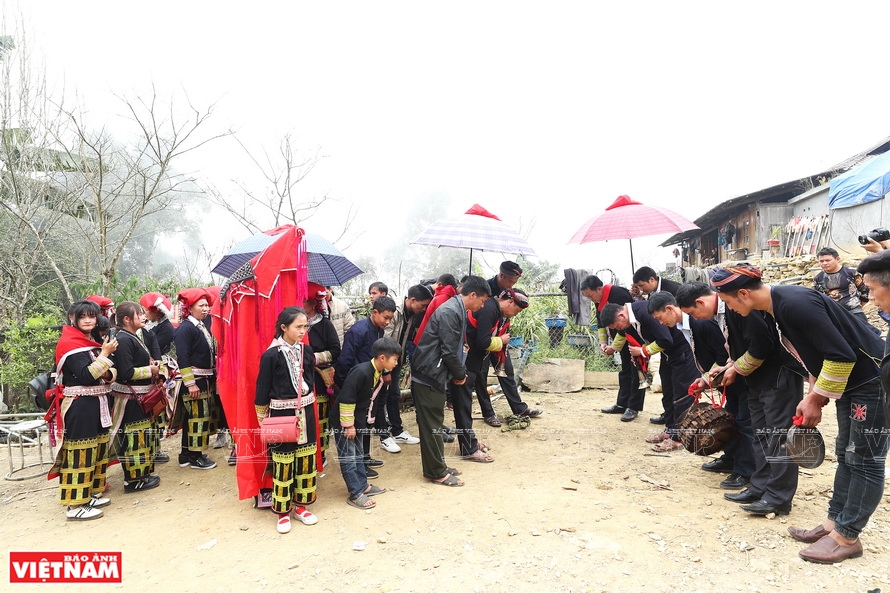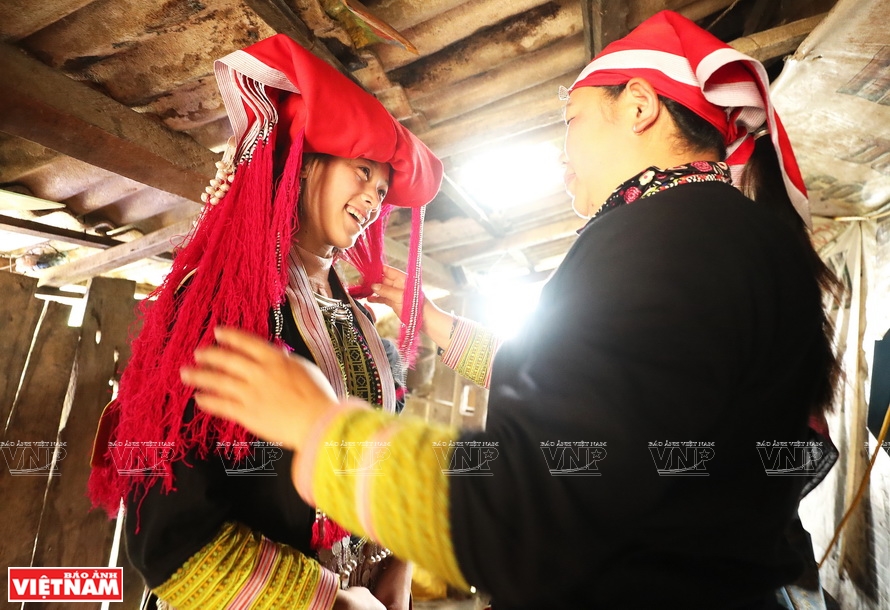Preserving the traditional rituals of the Red Dao, the groom Ly Lao Ta and the bride Phan Lo May’s wedding in Ta Phin Commune (Sa Pa - Lao Cai) showed humanity and community solidarity handed down from generation to generation for thousands of years.
According to the ancient custom of the Red Dao in Ta Phin, with the consent of both families, the engagement ceremony takes place one year before the wedding. During this time, the bride and groom are not allowed to be together or even talk to each other.
Around February of the lunar calendar, the groom's family chose an auspicious day to go to May's house to jointly do the wedding ceremony offerings and decide the date and time of the ceremony set and written down on two red papers called 'lucky destiny.' Each family kept one copy. The groom's family then gave the bride's family a pair of silver engagement bracelets for the girl's parents to give to the girl. With this pair of silver bracelets in her hand, the girl became a “taken woman”.

The groom's family recieves the bride's relatives. Photo: Hoang Ha / VNP

The bride's mother Phan Lo May taught her daughter the traditional customs
of the Red Dao before returning her to her husband's house. Photo: Hoang Ha / VNP
|
After the engagement ceremony, the bride-to-be, May, had to prepare new clothes for herself and the groom while the groom's family would prepare the offerings, wine, and meat for the wedding. Preparing the wedding feast means the groom's family had to raise about 10 pigs, dozens of chickens, and cook a lot of rice and have hundreds of liters of wine. Other families in the village would bring their chickens, wine, pigs, and rice to help the groom’s family. The family would then record the information and bring back the same things to the other families when the time came. The Red Dao in Ta Phin often consider other family’s tasks in the village as their own. As for May, after the engagement ceremony, she stayed at home to weave, embroider, and prepare wedding costumes by herself.
The wedding of the groom Ly Lao Ta and the bride Phan Lo May was held in October and took place over the course of three days and nights.
|
The wedding of the Dao people in Ta Phin is like a festival in the community. It’s an event to show the spirit of solidarity and reciprocity preserved for generations. |
On the first day, both sides of the family did an ancestor reporting ceremony. On the second day, Ta May’s family brought the bride to Ly Phu May’s house. The groom's family set up musicians on behalf of them to welcome the bride's family outside the village. That night, the matchmakers, the bridesmaids, the bride, and her parents stayed in a temporary room on the porch. Guests of the bride's family entered the groom's house by the side door.
The third day was the main wedding day. The opening ceremony was to take the bride to her new home. The shaman prayed to the ancestors of the groom’s family about their welcoming the bride, hoping the ancestors would accept the new member into the family. The next step was the naming ceremony for the groom Ly Lao Ta. The shaman informed the ancestors that the family’s son would now build his own family. He asked the ancestors to bless the couple with happiness, prosperity and many smart and talented children. The bride and groom then officially became husband and wife in the presence of ancestors and villagers.
The groom's family then arranged a feast for guests of the two families. The band played music during the party. The bride and groom came to each table to thank the guests. Before leaving, each member of the bride's family was given 1kg of pork by the groom's father. The groom handmade two bamboo baskets beforehand so that his parents-in-law could use them to take the meat home.
By Hoang Ha